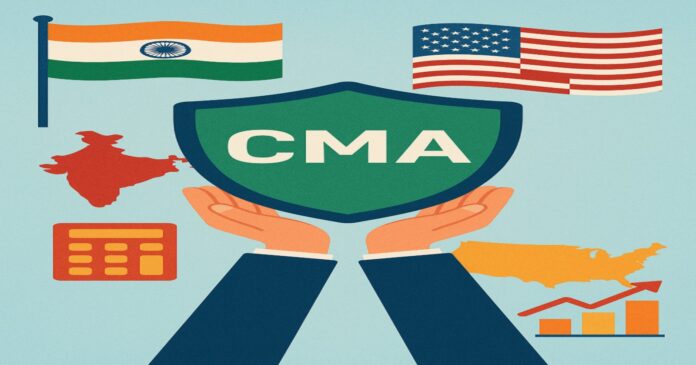Same three letters, two very different signals. CMA full form in the USA means Certified Management Accountant. CMA full form in India means Cost and Management Accountant. Recruiters don’t treat them as the same thing, and if you mix them up in conversation, you’ll sound unprepared.
I’ll cut the noise. Here’s how hiring managers in both countries look at the title, what they expect, and where it can push your career.
CMA Full Form in the USA
In the States, CMA comes from the Institute of Management Accountants. Recruiters see it as a management finance badge. It’s less about audits and more about driving business with numbers.
When a US recruiter hears CMA, they think:
- This person can handle budgets, forecasting, and decision support
- Good fit for FP&A, corporate planning, or controller roles
- Finance partner to leadership, not just an accountant
- Global credential respected in MNCs and across industries
They’re not looking for you to sign off audits. They want someone who can sit next to the CEO and say, “Here’s what the numbers mean for our next move.”
CMA Full Form in India
In India, CMA full form connects directly to ICAI-CMA. Recruiters don’t confuse it with the US version. Here, it’s about statutory roles and compliance authority along with cost management.
When an Indian recruiter sees CMA, they read it as:
- Strong in cost audit, taxation, and corporate law
- Trusted for PSUs and manufacturing setups where cost structure is everything
- Backbone for internal audits and statutory filings
- Finance leader who knows how to keep regulators off the company’s back
It’s not a “management partner” in the same sense as in the US. It’s more compliance-heavy and linked to regulatory credibility.
CMA Course Details Recruiters Care About
Recruiters don’t just glance at the letters. They know what the CMA course details include, and that’s why they interpret the qualification differently.
US CMA course details
- Two-part exam from IMA
- Covers planning, analysis, performance management
- Designed for management-level finance roles
- Strong recognition outside India, especially in MNCs
Indian CMA course details
- Three levels: Foundation, Intermediate, Final
- Covers costing, law, taxation, and compliance
- Recognized in statutory and regulatory settings
- Strong within India, limited brand pull abroad
So the recruiter in Chicago and the recruiter in Mumbai aren’t seeing the same credential. They’re seeing the course content behind the letters.
Recruiter Lens: USA
A hiring manager in New York sees CMA and immediately thinks of FP & A, business analysis, and corporate finance. They want someone who can translate numbers into decisions. CMA full form here = management finance leader.
Roles they link with it:
- Finance Manager
- FP&A Analyst
- Controller
- Corporate Planning Lead
It’s forward-looking, business-linked.
Recruiter Lens: India
A recruiter in India sees CMA and thinks compliance, cost audit, taxation. CMA full form here = regulatory authority plus finance.
Roles they link with it:
- Cost Accountant
- Internal Auditor
- PSU Finance Officer
- Tax Specialist
- Cost and Compliance Manager
It’s audit-linked, law-linked, and stronger in cost-heavy industries like steel, cement, or government-backed companies.
Career Outcomes: CMA USA vs CMA India
This is where confusion hurts candidates. You throw “CMA” on your CV and forget to clarify which one, recruiters assume what they know.
- CMA USA: Career pushes toward management finance, FP&A, global roles.
- CMA India: Career pushes toward compliance, audits, and industry finance in India.
The courses were built with different end goals. That’s why recruiters interpret them differently.
Salary Expectations: CMA USA vs CMA India
Recruiters don’t just look at the letters. They measure what the credential means in pay scales.
- CMA USA: Salaries land higher, especially in MNCs and global finance hubs. A mid-level manager with CMA in the US or Middle East can see packages climb faster because the credential is tied to decision-making roles, not just compliance.
- CMA India: Packages are steady but tied to industry. In PSUs or manufacturing companies, CMAs earn well but not on par with global corporate finance roles. Recruiters in India value the qualification, but the growth curve is slower compared to the US version.
So when recruiters read “CMA,” they’re already thinking about what that means for pay ranges and career ceilings.
Global Recognition and Mobility
Another recruiter filter: where the credential is valid.
- CMA USA: Global recognition. Recruiters across the Middle East, Canada, Europe, and Asia see the title as management finance ready. It travels well.
- CMA India: Strong recognition within India, but outside, it doesn’t carry the same recruiter pull. If you’re applying to an MNC abroad, you’ll need to explain it, and in many cases, recruiters prefer CMA USA because it’s the one they know.
This is why candidates planning to work outside India lean toward CMA USA. Recruiters abroad understand it without explanation.
Which One Works For You?
Think about your market.
- Want to work in MNCs, overseas, or global finance? The US version of CMA is the better bet.
- Want to build a career in India with cost audits, PSUs, and statutory-heavy roles? The Indian CMA works.
Don’t confuse them. Recruiters don’t.
Final Thought
CMA full form isn’t universal. Same letters, but recruiters in the USA and India are reading two different things. In the USA, it’s a leadership track in corporate finance. In India, it’s compliance authority mixed with cost management. Both matter, but the right one depends on where you want your career.
If you’re leaning toward the global CMA, training partners like Zell Education can help you prep in a structured, time-efficient way that doesn’t pull you away from work.


